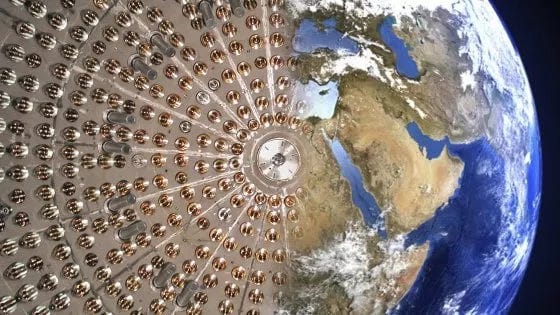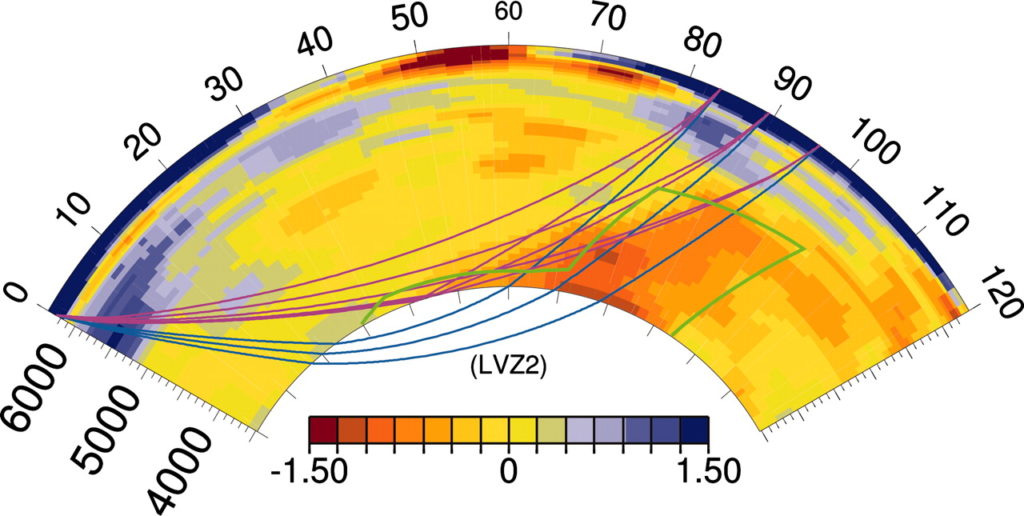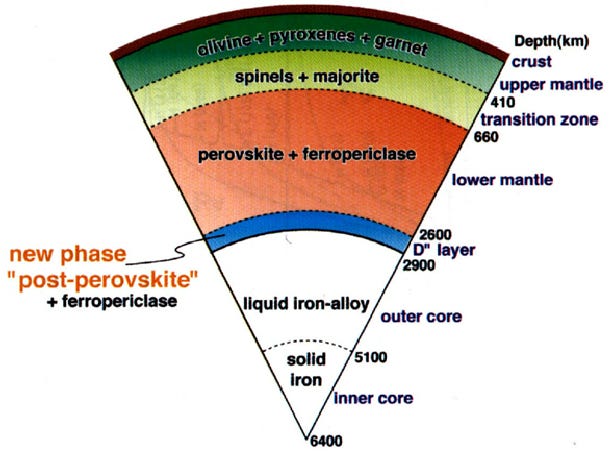An Earth's mantle made of uranium?
The search for an effective title misleads the readers of a post
A friend of mine once shared me a link to a press release from the webpage of the Italian edition of Scientific American. The source was the National Institute of Nuclear Physics (INFN). The headline: "Geoneutrinos confirm that we are resting on a mantle of uranium and thorium." I imagine any geologist would frown a bit at this statement. Why? Because the mantle is not made of uranium and thorium. Plus, this research had not found out that the mantle is composed of uranium and thorium. The research confirmed that most of the Earth's internal heat comes from the decay of radioactive elements widespread not only in the crust (as already well known) but also in the mantle. Geoneutrinos are subatomic particles, a byproduct of radioactive decay (while neutrinos come form stars for fairly similar reasons).

Before someone urges us to abandon the planet because it is radioactive, let's clarify that the Earth's heat flow is largely due to radioactive decay as any geologist student is taught at the university. The Earth has a normal "background" of radioactivity with which life has developed all over the planet. No geologist is surprised at the idea of the presence of uranium in any kind of rock, although in traces. Like other elements with a "heavy" nucleus (large number of protons and neutrons), uranium tends to lose protons from the nucleus transforming itself in another element: uranium has 90 protons in the nucleus, every now and then it loses 2 and becomes thorium, that has 88 protons. The friction of these particles crossing the rocks generates the heat that makes the average temperature inside the earth's crust increase of about 30°C every km of depth. Radioactive decay is used to calculate the age of rocks that are not too recent in geological terms: an initial amount of uranium becomes half thorium in about 23 million years (half-life).
Any element is present in trace amounts in every rock. Some are particularly rich in uranium. The novelty of the INFN's research is to have confirmed, by detecting geoneutrinos from the mantle in their Borexino experiment in their labs under the Gran Sasso mountain, the presence of uranium and thorium in the mantle (to the detriment of those who may not have thought it possible). It is a long way from saying that the mantle is made of uranium and thorium!
The Earth's mantle
The mantle is the rocky layer about 2900 km thick that covers the Earth's core. On its outside there is the crust, which varies between nearly 0 m (along the oceanic ridges) to 70 km thick (under the mountain ranges). We know much more about the composition of the crust. We have sampled and analyzed it far and wide and there are two types of Earth’s crust: oceanic (denser and thinner) and continental (less dense and thicker). The mantle can't be reached by drilling (although someone will maybe try), but something from its uppermost part has come to us from deep dredging along certain faults that dislocate oceanic ridges or from deep volcanic conduits that may have brought something back from the upper mantle (along with diamonds). As with the crust, these are rocks composed of silicate minerals. In the crust they are mainly silicates of alkali minerals (Ca, Na, K), in the mantle iron and magnesium silicates are predominant. Iron and magnesium based minerals are also widespread in the crust, especially in the oceanic crust, but in the mantle these so-called "ferromagnesian" minerals rule - note that I did not write about uranium and thorium silicates.

The existence of the mantle was postulated by Croatian geophysicist Sinisa Mohorovicic at the beginning of the 1900s. He noticed particular refractions and reflections of seismic waves due to an earthquake that he was analyzing and explained them by a transition to rocks with different elastic characteristics (which cause an increase in the speed of seismic waves) at a depth of 40-50 km under the Balkan Peninsula. This surface of discontinuity, the crust-mantle boundary, still bears his name as it goes by the friendly name "the Moho".
The mantle’s composition is still debated and there are several models, based mainly on the velocity of seismic waves in the mantle. The widespread presence of peridotites is recognized (peridot, or "olivine" is a silicate of iron and magnesium - (Fe,Mg)SiO4 - found in many basalts, volcanic lavas believed to originate from the upper mantle). Again, I haven't even mentioned uranium. It is there, but it does not form fundamental minerals in the composition of the rocks that make up the mantle, which I am not here to discuss.
I would also like to point out that I am certainly not the one to say that the Earth's mantle is not made of uranium. It is enough to look for some sources, university sites or encyclopedias, just not to resort to the usual Wikipedia. The National Geographic has beautiful informative pages on the structure of the Earth. I am convinced that at INFN they already know everything. Yet it happened...
Poor basic scientific culture, especially in geology
Some time ago I answered an advertisement of a German company that dealt with communication and had a position (in place coincidentally close to the INFN) for a web editor with scientific background and excellent English who would take care of the transposition into common language of the scientific contents of a research sector of the ESA, the European Space Agency. They then preferred someone "with more proven experience in the field." I might not have specific experience in scientific journalism but obviously I would have never have written such a misleading title. I've been lately realizing that the basic scientific culture has been reduced to a trickle. My beloved geology seems to be one of the subjects that suffers the most: flat Earth, people predicting earthquakes, boreholes accused of generating earthquakes, dowsers looking for water with a piece of wood, petroleum that comes from dinosaur bones... a common belief is that when an earthquake occurs the day is hotter. It's not like doctors and biologists are any better off given the anti-vaccine movements and evolution deniers. With people more and more uninformed on the subject and public administrators who only worry about votes, decisions are made more and more based on beliefs than on scientific reality. I myself can no longer be a geologist, I had to change career. This is also a sign of inattention to matters that at least my country should actually take care of more, given the seismic, volcanic, and hydrogeological risks to which it is exposed. But scientific culture in Italy has always been considered second rate, just look at the programs of schools (and I am sure that the Italian Edition of Scientific American and the INFN would agree with me).
I would add that in school programs the geological part is the one that is least taken care of. Unless you have a degree in geology, it is difficult to understand that if INFN says that the mantle is made of uranium it is not really so - no one else has the background to infer this. Of course, there is uranium in the mantle, thorium as well. This is not equivalent to say that it is made of uranium and thorium. If anything, one should talk about minerals rather than chemical elements. It is the minerals that form the rocks of which a planet is made. But how much have you studied minerals and rocks in school? What a nuisance, eh? If we must limit ourselves to talk about chemical elements, let's at least talk about iron and magnesium, but also a lot of silicon and oxygen (the most common element in the crust - strange, but true). There is also water, you know? But we're not talking about underground lakes or caverns, or aquifers comparable to those in the upper crust (many imagine these as underground lakes too, alas). Science is mistreated in compulsory education. Scientific disinformation is what we get.
But OK, let's keep up hurting ourselves....



